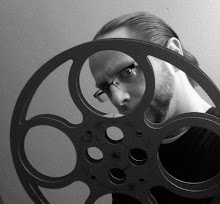When Captain Chesley “Sully” Sullenberger landed his plane,
a US Airways flight with 155 souls on board, into the Hudson River after losing
both engines shortly after takeoff on a cold January morning in 2009, the
nation, less than a decade after 9/11, quickly embraced him as a hero. In
making a film about the hero and the incident that made him so, the challenge
wasn’t in making Sully the hero we believed him to be, but rather in stretching
the incident, which only lasted 208 seconds, into a feature-length film. The task
falls on the wings of two film veterans; actor Tom Hanks and director Clint
Eastwood.
Sully (Tom Hanks) and his co-pilot Jeff (Aaron Eckhart),
crash-land their flight into the Hudson River after losing both engines shortly
after takeoff. While the nation celebrates their heroic act in saving every
life aboard the plane, the NTSB (National Transportation Safety Board) launches
an investigation which has Sully wondering if he had acted the right way.
When telling the story of true-life disaster such as TITANIC
(1997) and APOLLO 13 (1995), most of the work is already done for the
filmmakers, as those incidents were drawn out over hours and days. Sully’s
flight, which lasted only 208 seconds, presents a much tougher challenge.
Director Clint Eastwood, obviously aware of this, fills the time with the
investigating NTSB, coming as villains looking to hang Sully and his First
Officer, poking and prodding at interview after interview which eventually climaxes
in a public hearing. In addition, there are several flashbacks to Sully’s
backstory including his evolution as a pilot, along with endless phone calls to
his wife (perfectly played by Laura Linney). Despite these scenes being
designed to develop Sully and make him wonder if he made the right call in
landing in the river (as opposed to heading to the nearest airport), none of
these sequences seem to generate much excitement. It’s Eastwood’s trademark
patient style, as everything is presented as dry and as-is as possible in
endless scenes of conference rooms and hotel rooms.
But where SULLY really soars is anything involving the
flight, crash, and evacuation itself. Everything including the first sign of
trouble, the actions of the pilots and flight attendants, the fear from the
passengers, and the eventual response from New York City’s finest are harrowing. Eastwood, with his gentle
touch, generates an unexpected amount of emotion during these sequences…and the
welling-up of tears for the audience is such a wonderful and sneaky build that
we don’t even realize we’re crying until it’s too late to hide it. The human
aspect of the flight and landing is expressed beautifully, as Eastwood drops us
right in the shoes and eyes of concerned New Yorkers as they watch a low-flying
plane in a place it’s not supposed to be. The visual effects are jawdroppingly
stunning.
Tom Hanks doesn’t quite wow as Sully, as it’s a quiet and
nuanced performance of a man who simply wanted to do his job and go home. There’s
nothing over-dramatic about him in the role, which matches the tone of the
film. Aaron Eckhart is fine as Sully’s loyal co-pilot, although he’s portrayed
as a little too loyal; almost like a kiss-ass more than a wingman.
SULLY has a non-linear structure to it, as the crash
sequence is shown twice; once quickly in the early goings and then again at the
finale in an extended way. That finale, which involves the public hearing,
feels anti-climactic as they run a flight simulation four goddamn times trying to prove Sully was in the wrong. The
final word is also an odd one and doesn’t quite put an exclamation point on the
film. Overall SULLY has many moments of boredom countered by even more emotional
power, and although it flies uneven, it’s unfair to dismiss it as SULLY’s
landing is much better than the flight.
BOTTOM LINE: See it


No comments:
Post a Comment
A few rules:
1. Personal attacks not tolerated.
2. Haters welcome, if you can justify it.
3. Swearing is goddamn OK.